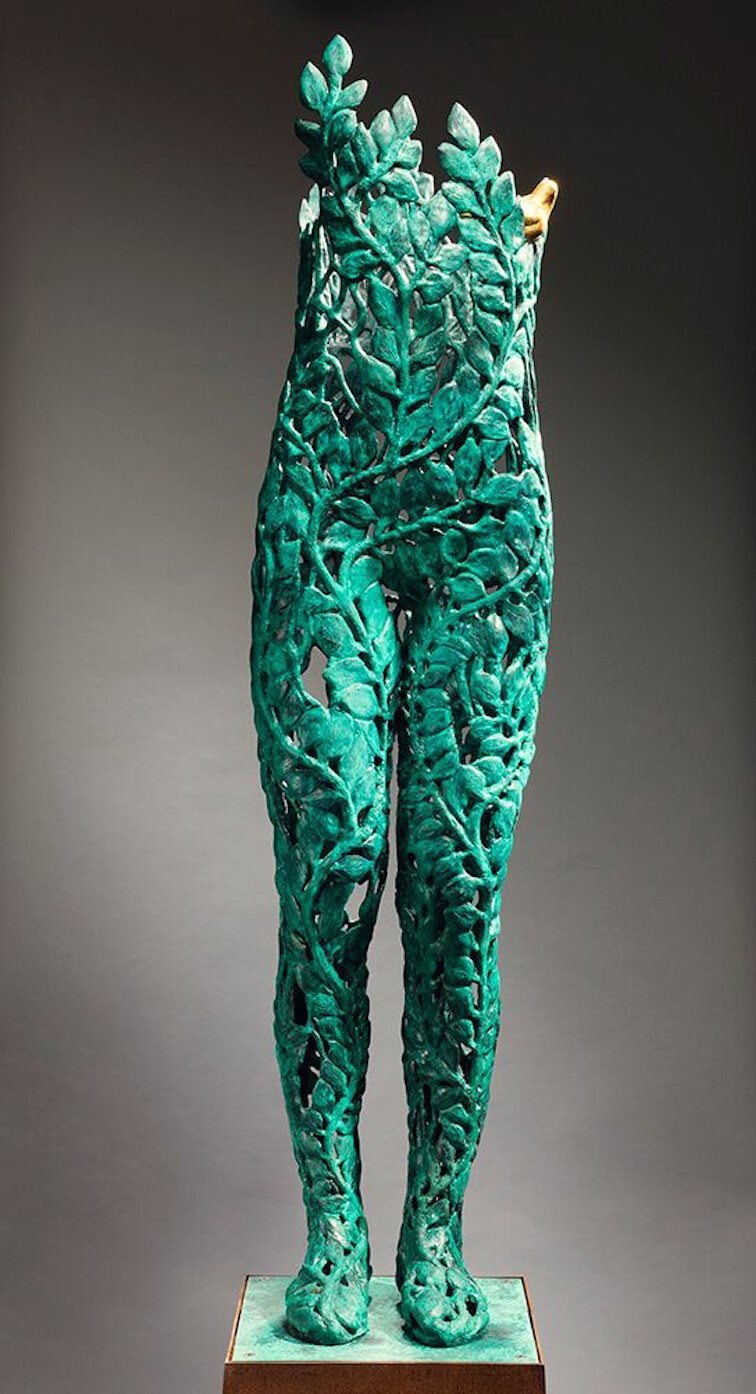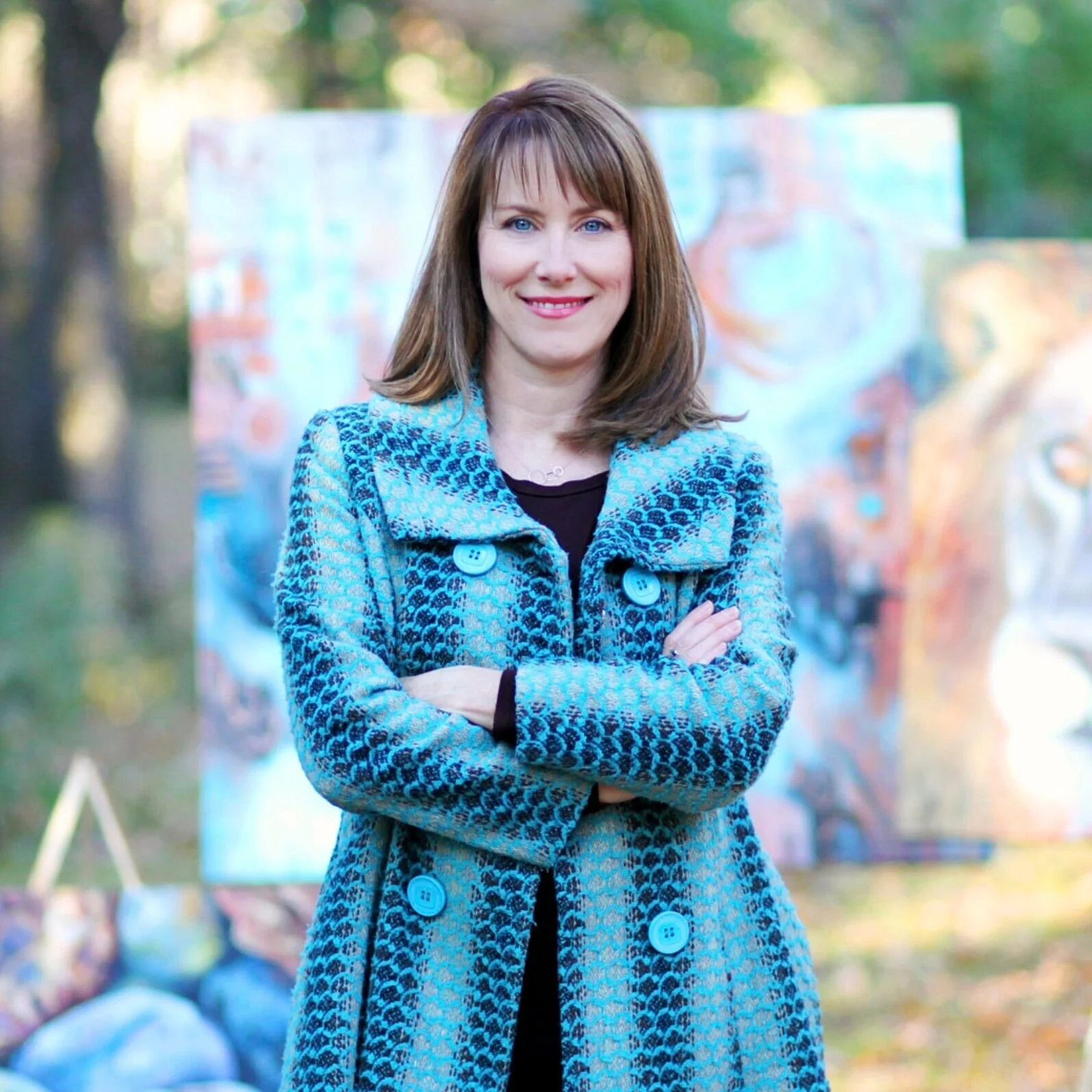Interview with artist Michael Warrick
Michael Warrick is an Arkansas art icon and has / continues to have a huge impact on the art scene in Arkansas and around the world. His sculptures add grace and sometimes whimsy to interiors and landscapes. His talents as an artist and educator earned him the 2020 Arkansas Living Treasure by the Arkansas Arts Council – an honor reserved only for those who excel in their craft and successfully advance the arts through community outreach and education. Michael is represented by Boswell Mourot Fine Art in Little Rock, Arkansas. All photos are courtesy of Michael Warrick unless otherwise noted.
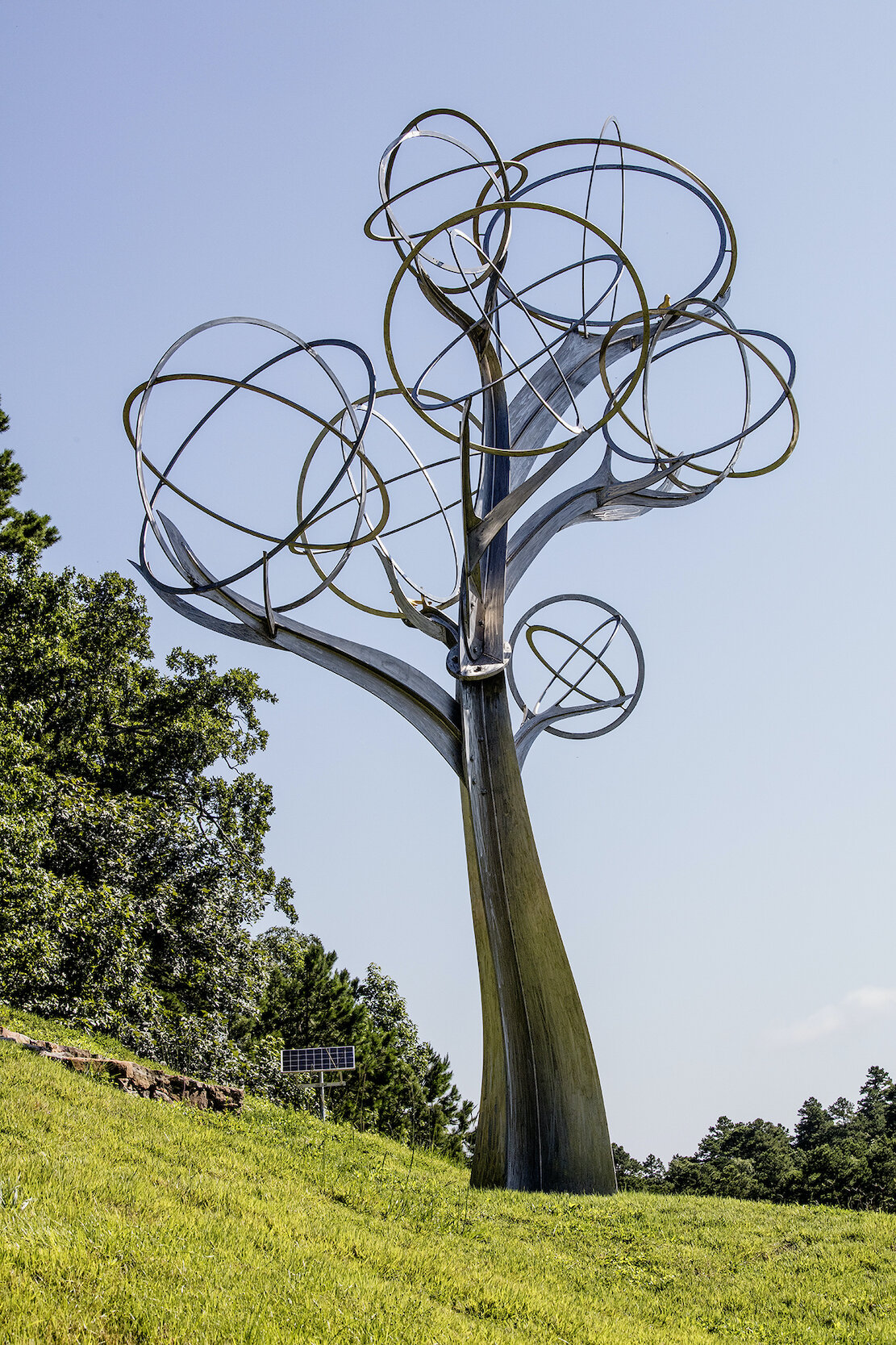
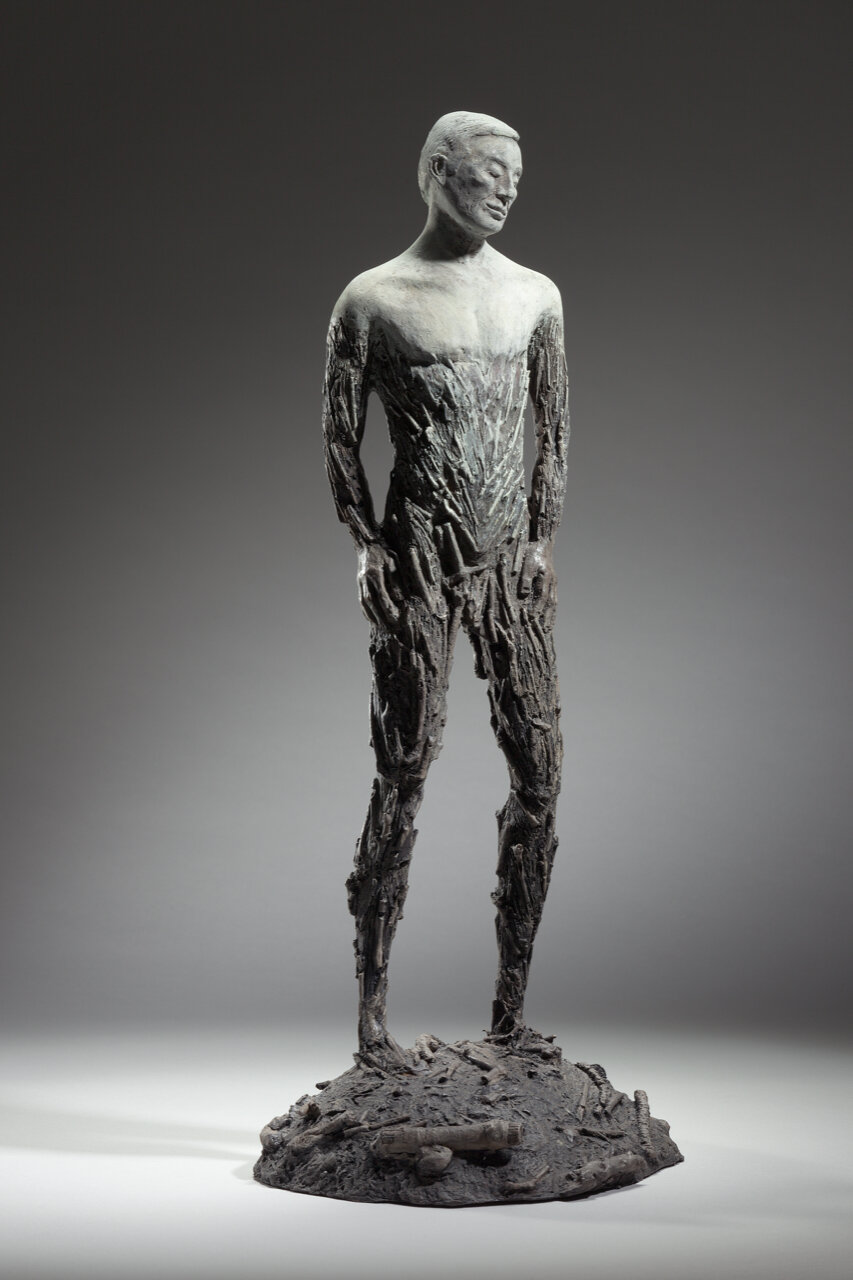
AAS: First of all, congratulations on being named the 2020 Arkansas Living Treasure by the Arkansas Arts Council. How important is that recognition?
MW: To be recognized for the fifty plus years I have learned the craft of metal working is validating. The effort over those years to learn how to weld, cast and fabricate with stainless steel, cor-ten steel, iron, aluminum and bronze has been an enriching experience that I have consciously worked hard to pass on through teaching many students, friends and community members. Learning and passing on the knowledge is an important part of why the recognition I received is important.
AAS: You are not originally from Arkansas. How did you end up in Little Rock and in the Department of Art and Design at the University of Arkansas at Little Rock (UALR).
MW: I am originally from Northern Illinois. I went to Illinois State University in Normal, for my bachelor’s degree in ceramics and Southern Illinois University for my Master of Fine Arts degree in sculpture and ceramics. Following graduate school, I taught at St Louis Community College part-time for two years. From there I moved to being a full-time artist and doing visiting artist lectures and artists-in-residencies for five years in several states. In 1987 I was hired as an Associate Professor of Sculpture and Ceramics at South Dakota State University in Brookings and 1990 as I was hired as an Associate Professor of Sculpture at UALR. Since then I have called this great state my home.
“There are a lot of moving parts to producing a large work for the public and it is an amazing and competitive field.”
AAS: You were recently featured in the Democrat-Gazette in a wonderful and insightful article by Sean Clancy. You must have been very proud of how it captured your influence on art and sculpture in Arkansas, really a world-wide influence. The article mentioned your iconic collaborations with a former student, Aaron Hussey. Are collaborative pieces something you seek out or do they just happen at the right time and place?
MW: Collaborative works are not something I seek out. The works that I have done with Aaron Hussey just happened at the right time. The Commemorative Garden at the National Parks Central High historic site in Little Rock was finished in 2001 when Aaron was a graduate student at LSU. Straight Lines on a Round World at the Little Rock Convention Center was completed in 2017 when he had been a freelance artist for over ten years. Both projects were significant works for us. We are craftsman and problem solvers that work toward bringing integrity to the idea, process, budget and product. We work well together and understand that the needs of the project are the most important thing. Each project had its difficulties in the design process, production and installation. Working as a team helped us solve all the challenges we faced over the years of revising and creating the works.
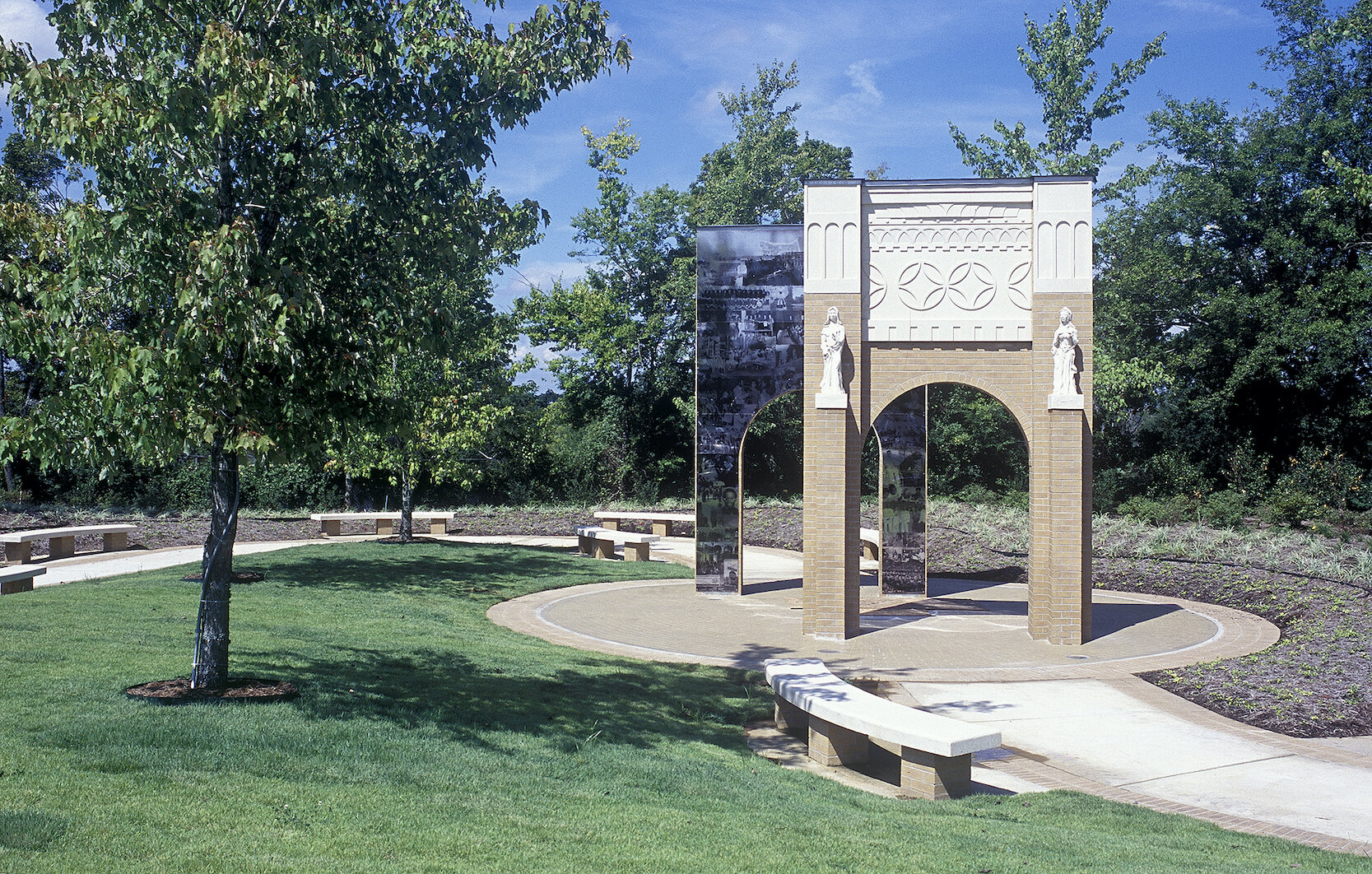
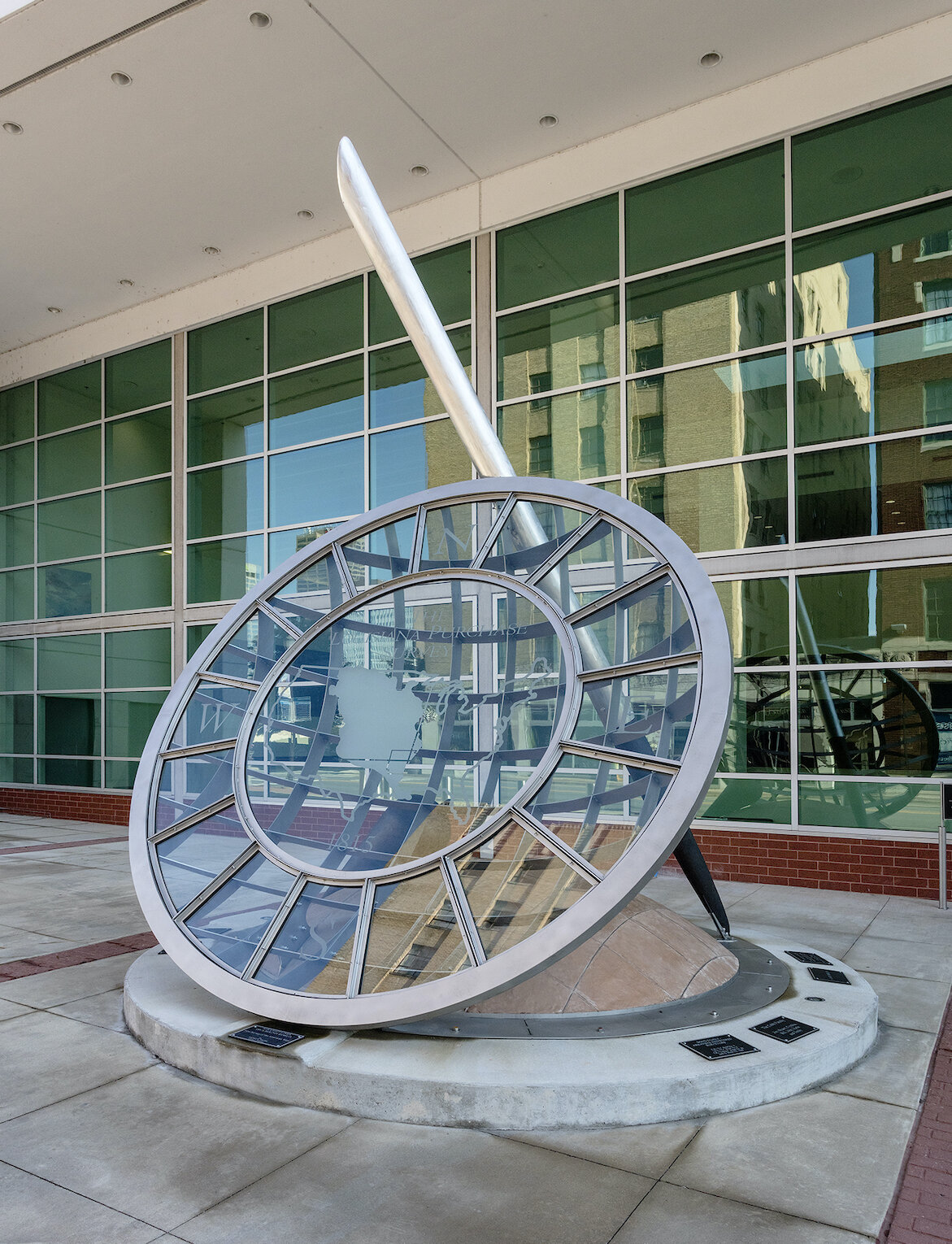

AAS: You work in all types of media. What do each bring to sculpture? Do you have a favorite medium?
MW: Metal is my primary medium. I love the capabilities of stainless steel, bronze and cor-ten steel. I feel that they bring malleability, strength and engagement to the viewer.
AAS: Early on you were trained in ceramics and are now creating ceramic works again. Have you come full circle, or have you been creating ceramic sculptures throughout your career?
MW: I have come full circle and am still hungry to work in clay as a medium. Clay has a great capacity for plasticity, strength and surface variation that I feel not many materials have. For a few decades I did not work in water-based clay. In 2014 I began working in clay again and still see an enormous amount of possibilities for the material through the variety of processes I learned in undergraduate and graduate school.
The techniques that I have experimented with since 2014 were Sagger firing, Ruku firing, low-fired oxidation glazes and high-fired stoneware wood firing. It has been great getting back into these approaches and playing with slips, glazes and firing techniques. All the pieces are an experiment to see how far I can go with processes and aesthetics. My approach to working is to make a large 18” - 24” diameter portrait in oil-based clay first. Next, I make a plaster or a rubber and plastic mother mold of that form. Later, I do a water-based clay replica of the form from the mold. This allows me to do wall pieces, free standing works, small sections, and multiples.
An important reason why I am attracted to so many processes is that they feed my curious nature and my interest in expressing transformation and memory as part of the human experience.
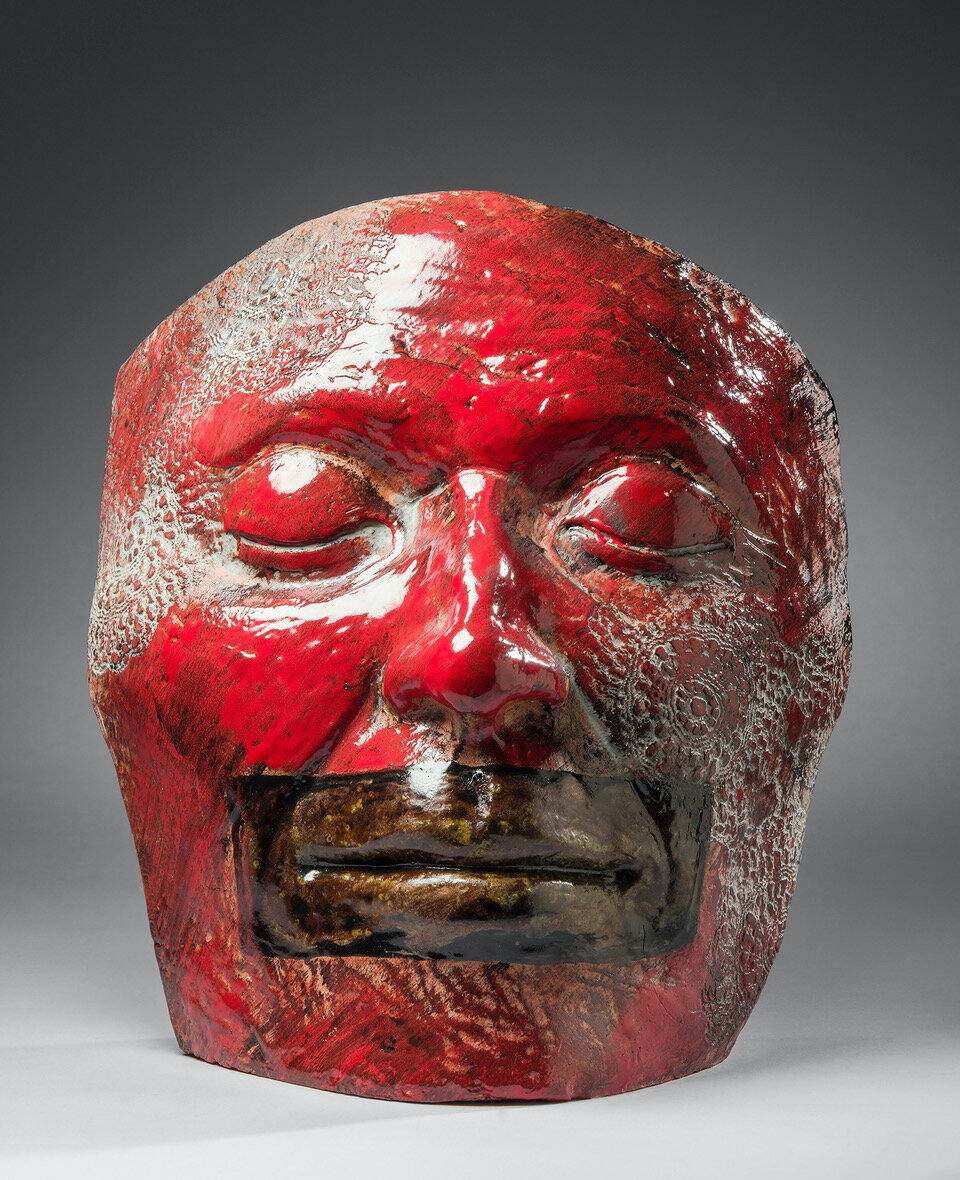
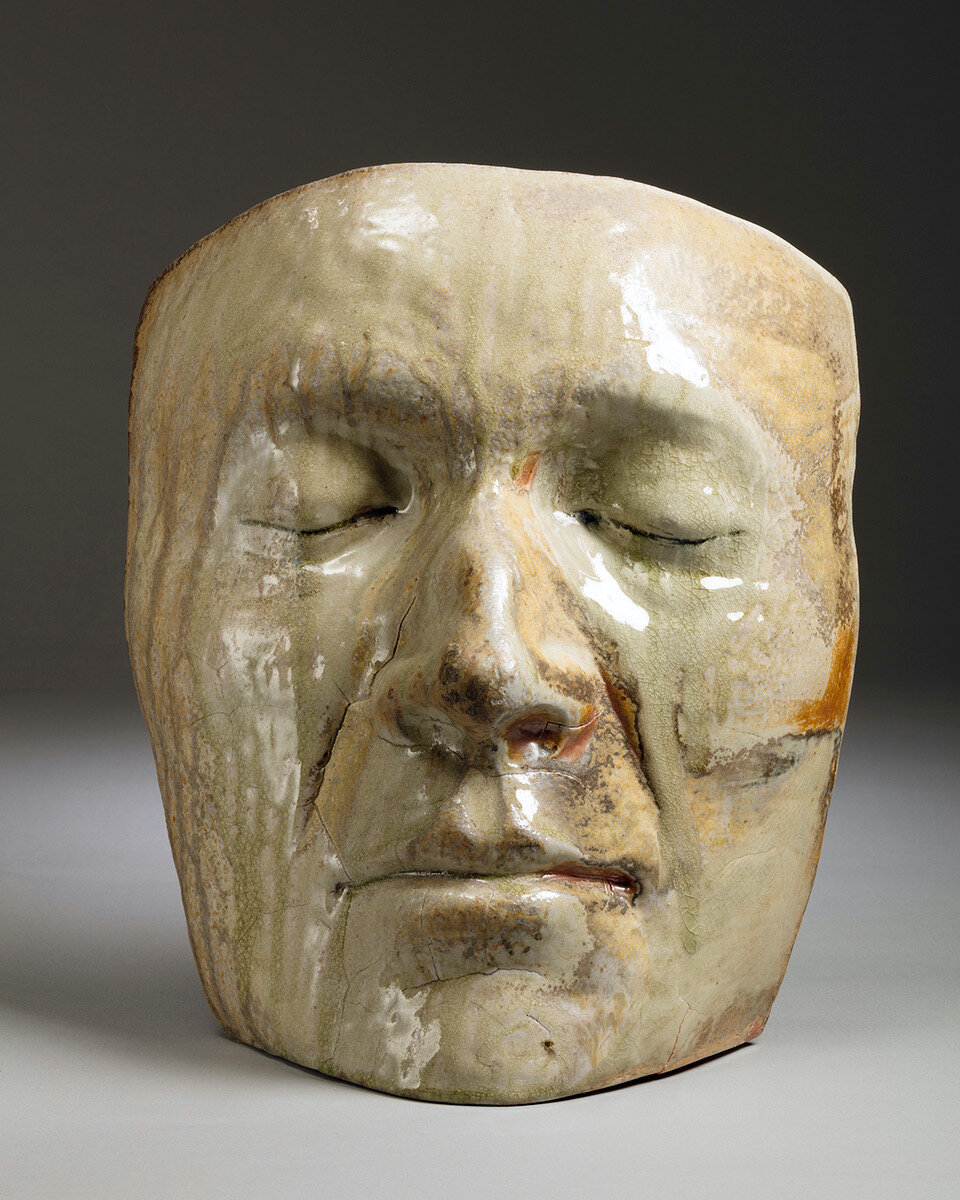
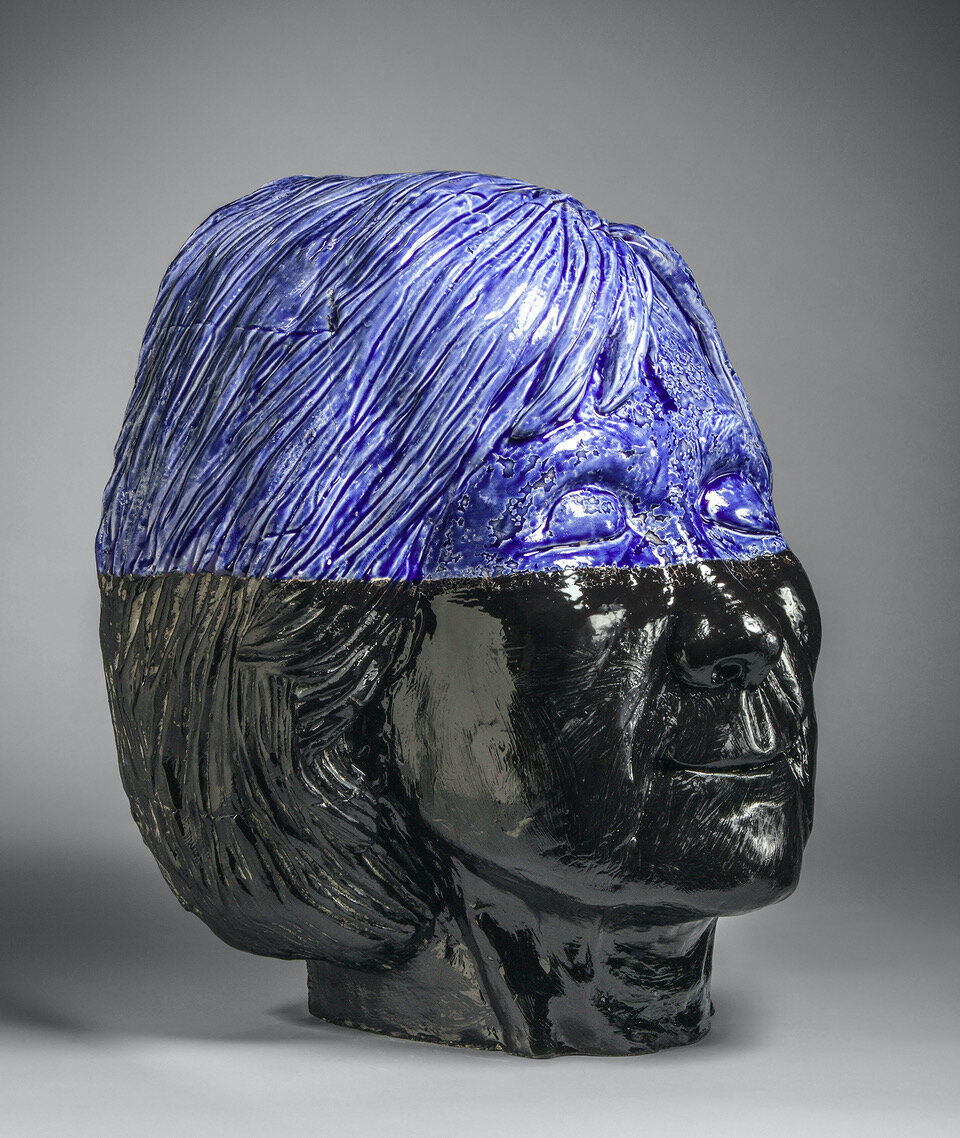
AAS: In the Democrat-Gazette article you mentioned Joe Corsello as a major influence in your formative years. Were there sculptors who influenced you as you developed your interpretive style?
MW: Joe Corsello was a very important person in my life from a very young age as he helped solidify the importance of my creativity by challenging and encouraging me. In grade school he taught me through a few private lessons and in high school he always had me competing in exhibitions and doing temporary murals for public buildings. It was a great introduction to being an artist through a committed teacher.
Throughout my career I have been influenced by the two very different sculptors, Claus Oldenburg and George Segal. Oldenburg does monumental renderings of common objects like baseball bats, umbrellas and clothes pins. He simplifies and enlarges these every-day objects as a way to enhance their significance and help us see the beauty of their design. You can see that influence in The Mockingbird Tree sculpture that I created in 2016 on Chenal Parkway in west Little Rock. George Segal does subtle social commentary work through simplified human reproductions in plaster and bronze. I have always been drawn to his ghost like figures with their simple yet poignant body postures and environments. You can see this influence in the sculpture Youth that was placed in Little Rock’s Sister City Hanam, South Korea sculpture park in 2017 and with an editioned copy exhibited in the 2019 Arkansas Arts Centers 61st Delta exhibit.
“In large scale public art, the designing, developing, collaborating, fabricating and installing is a challenging process to work through.”
AAS: I guess you are most known for your large public sculpture commissions. Would you talk about large commission works? Your works are in many corporate and private collections. Are most of those also commissions?
MW: Large commissioned public art works are a challenge on many levels. You need a thoughtful creative design sensibility, an aptitude for clear and concise writing, the ability to develop a budget that is realistic, a sense of how important history and place can be in the development of a concept for a site, a tenacity and ability to work through challenges, a temperament for getting to the core of solving a problem, the technical skills to be able to produce the work and the confidence in your abilities to find something of meaning in what you create.
I have been very fortunate to have had such great experiences with corporate and private commissions in the Little Rock area, Texas, California, South Korea and China. I have also been blessed to have sold many works over the years to private collectors through gallery, museum and studio sales.
AAS: I especially love your Tree of Equality, Justice, and Peace at the Ottenheimer Library at UALR. How did that sculpture come to be?
Tree of Equality, Justice, and Peace, 10’ x 10’ x 8’, stainless steel, bronze, gold leaf, Ottenheimer Library at the University of Arkansas at Little Rock, 2016
MW: The Tree of Equality, Justice, and Peace was a commission from the UALR Foundation. The foundation wanted to honor former Chancellor Joel Anderson’s commitment to serving the university and creation of the Institute on Race and Ethnicity.
I was presented the opportunity of interpreting equality, justice, and peace through sculptural form. My interpretation was to create a permanent tree that would be home to three small songbirds that represent equality, justice, and peace in bronze and finished with gold leaf. There are also 90 cast bronze and gold leafed Dogwood leaves in the tree representing the 90 years that Little Rock Junior College, University of Little Rock and the University of Arkansas at Little Rock have been in existence.
For this project I did several drawings and then moved to having a 3-D rendering of the project. From there we developed digital water jet cut files for the stainless steel plate and printed renderings for the individual limbs that were forged and finished in stainless steel round rod. It was about a year-long process with the culmination of the project involving the removal and reinstalling of a ten-foot window to install the work in the library. The university foundation was very supportive, patient and generous in their helping me see this important project through to its installation.
Seed of Hope, 4’ x 4’ x 2’, marble / limestone base, Winthrop P. Rockefeller Cancer Center, UAMS, Little Rock, AR, 2009
AAS: I recently retired from the University of Arkansas for Medical Sciences (UAMS) and every day I walked by Seed of Hope and Transformation in the Winthrop P. Rockefeller Cancer Institute. They are wonderful pieces. I have often passed by a celebration gathering of family and staff in front of Seed of Hope and observed a cancer patient, who has completed treatment, dropping their token seeds of hope into the sculpture. It is truly a moving moment.
Transformation, 64” x 18” x 26” bronze / marble, Winthrop P. Rockefeller Cancer Center, UAMS, Little Rock, AR, 2010
MW: In creating the Seed of Hope I was presented the challenge of creating a work of art that could give hope to cancer patients. In the developmental stage I did lots of drawings and decided on a seed form because if you plant a seed, you invest in the future. So, I developed the idea that the sculpture was going to be a seed vessel form that had small seed shaped tokens of hope inside. These small seed like tokens symbolize patients that have recovered from cancer. Reading the stories of recovering patients on the UAMS Seed of Hope site or experiencing patients placing their token of hope in the vessel is an emotional experience. My original design was to create the Seed of Hope in bronze but when I brought the model for the seed form vessel to the foundry they said that it was going to take much longer and need a lot more funds than what was available for the commission. It was a difficult time. I took the clay model to Laurence, Kansas to a friend who had taught me stone carving over many years and he agreed to sell me a section of a large piece of marble from Turkey. This made it possible to complete the commission in time within the budget available.
Following the creation of the Seed of Hope I was asked by the hospital administrators to create another work of hopefulness for the fourth floor Institute. Transformation was the result. The idea of the sculpture is a woman who has given herself over to God in the hope that their spiritual guidance would help her overcome the difficulties in life. When the Institute asked me to develop a concept for the fourth floor I said I think I have an idea that would express what some patients go through in their treatment. I presented my model of Transformation. They felt that my idea was fitting and asked if there could be butterflies in the sculpture because that was their symbol for transformation. I agreed and felt integrating the butterflies enhanced the idea of communicating hope.
AAS: Youth won the Contemporaries Award at the 61st Annual Delta Exhibition in 2019. How did that remarkable sculpture come about?
MW: The Youth sculpture was a competitive commission from the Little Rock Sister City Commission. Because of this commission opportunity I decided to create a limited edition of five sculptures. The piece in the Arkansas Arts centers 61st Delta exhibit is number 2 of 5 in that edition. The idea of the work grew out of the Sister Cities mission of youth education and exchange. Youth was a digitally developed concept that expressed young people’s intellectual, spiritual and physical growth via an Arkansas growing vine. The 3-D print of this life-size sculpture was printed in PLA plastic in five sections then encased in a plaster and sand mold, fired in a kiln for five days, cast in bronze, cleaned, reassembled and finished. This approach to casting is a new and innovative approach used in the last few years. I worked with Bourgoyne Studio LLC in Baton Rouge to help me develop the digital concept, the 3-D prints, and worked with me to understand how we could cast the printed forms. It is a different way to think and produce concepts for casting in metal because I can utilize traditional methods and contemporary technology to develop a hybrid way if creating.
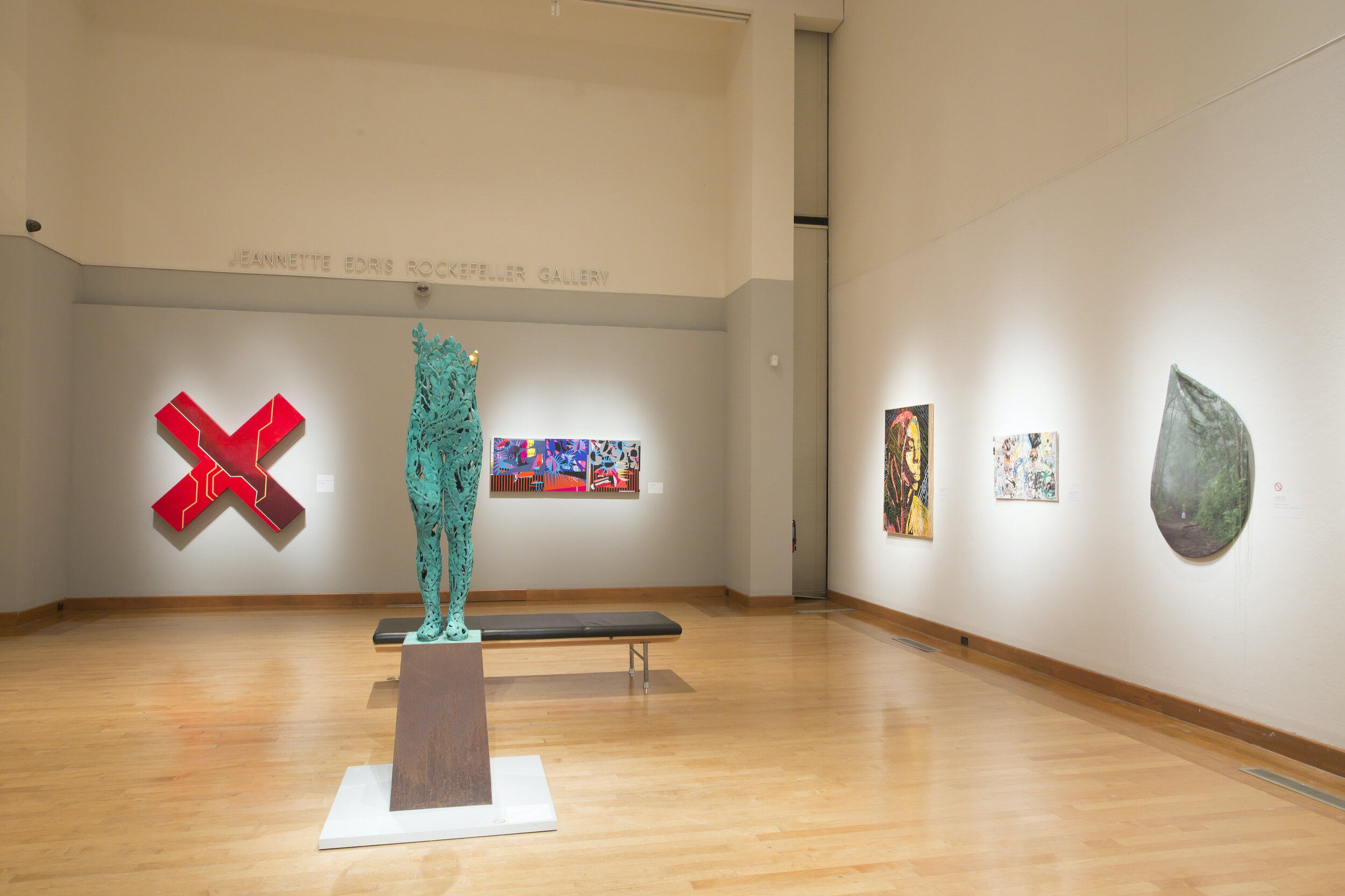
AAS: You have been at UALR since 1990. The new Windgate Center of Art + Design and the renewed public interest it brings to art education at UALR must make for an exciting environment. Are there other ways the art department has changed over the years?
MW: In the last few years I have been fortunate to be part of a team to help develop a new building and a diverse new program focused on contemporary craft, fine art, art history, digital art and art education. The ways the department has changed over the years are that we have developed visiting artists workshops, public art lectures, internships, senior capstone experiences, certificate training and stronger public art gatherings via art openings or art dedications. These types of learning opportunities are an important part of providing a stronger preparedness for college students and connecting our community.
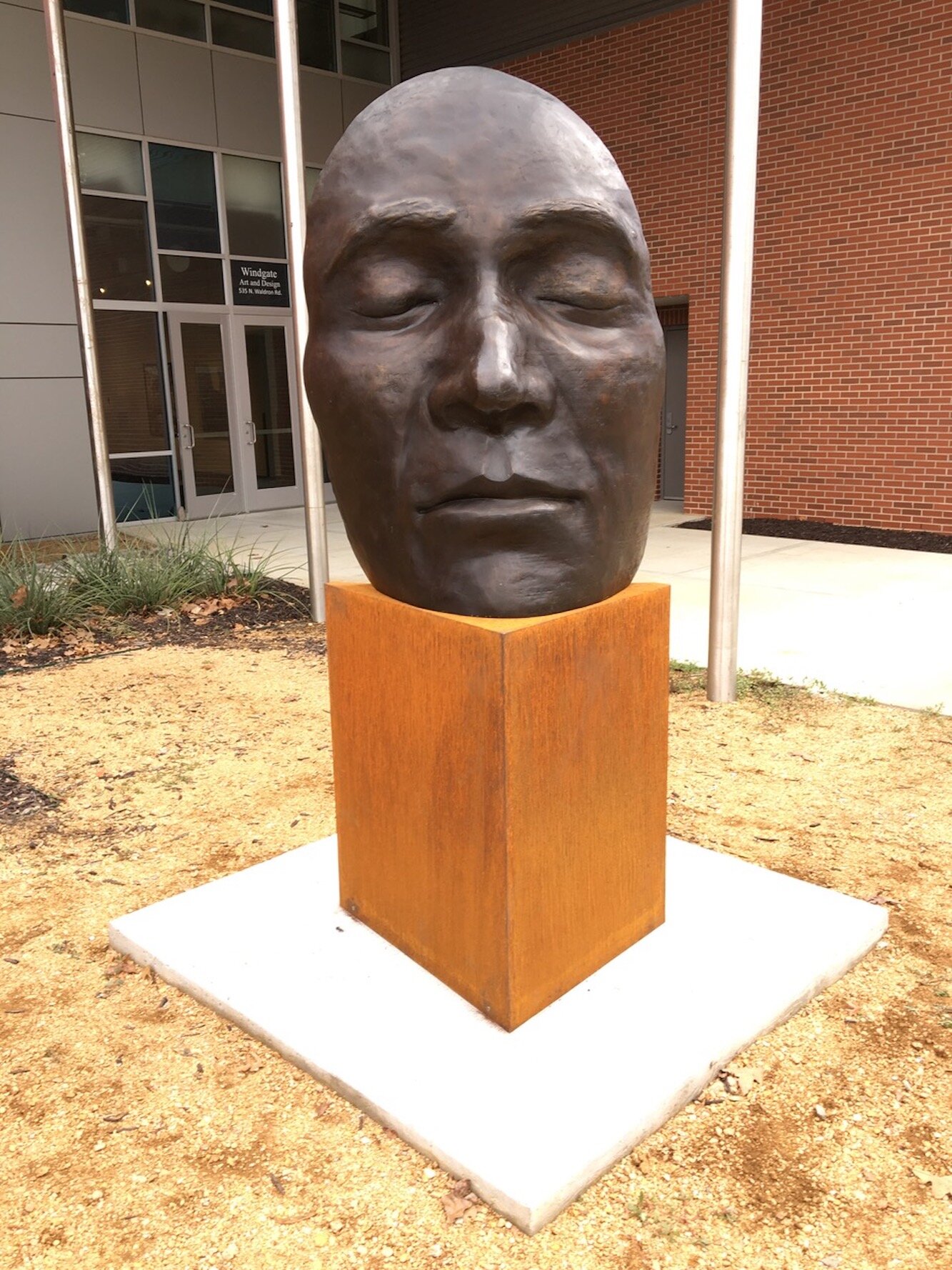
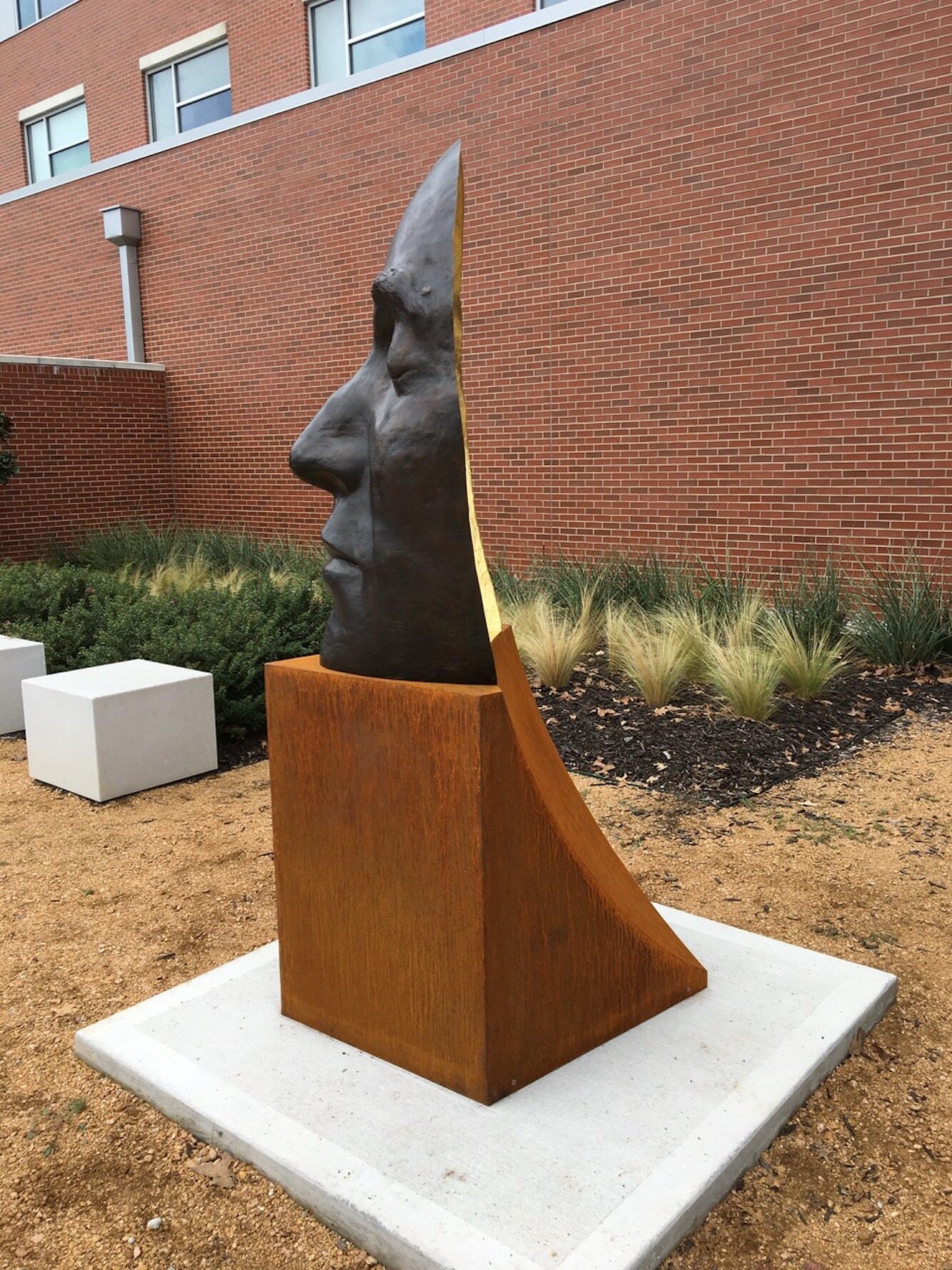

AAS: COVID-19 has certainly changed the mode of teaching, at least this year. I would think that art classes are most effective when they are face-to-face with physical interaction between the teacher and student. Do you think online or zoom art classes will become the norm?
MW: Because of COVID -19 I think that online classes, emails, and chat room meetings with students have been an important way for teachers and students to stay connected and continue to be creative. I do not feel that online or zoom classes will become the norm because I feel that face-to-face instruction is the best. The opportunity to work with students on their challenges on a weekly basis will always be a strong advantage because of experiential learning.
AAS: I would imagine, like all teaching, art education has changed over the years. In what direction do you see art education heading?
MW: Being an educator for 37 years I have seen and experienced a phenomenal transformation of how we learn and teach. I think we will continue to evolve experiential education as it is a tried and true process whether it is face-to-face or with a digital proxy.
AAS: You have taught so many students over the years and have influenced so many sculptors. What do you learn from your students through teaching?
MW: New ways to think, create, teach and learn.
AAS: What advice do you give your students who are concerned about the future of the fine arts? What advice do you wish you had gotten as a young artist?
MW: Bring your life experiences and your own aesthetic voice to what you create.

